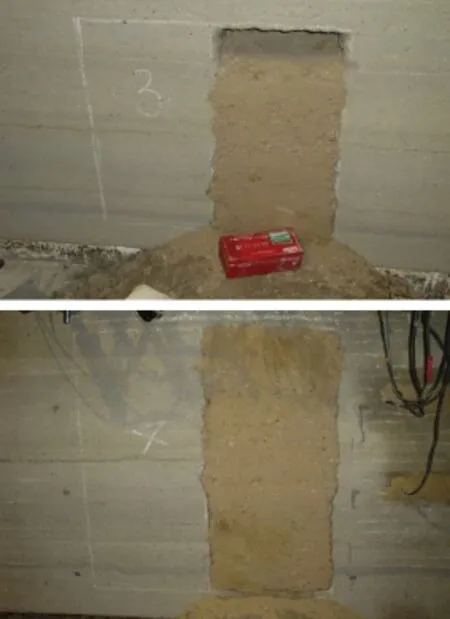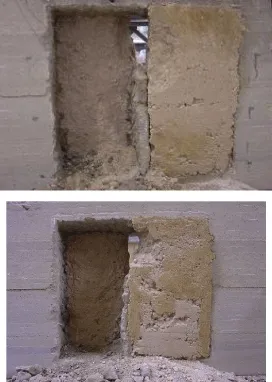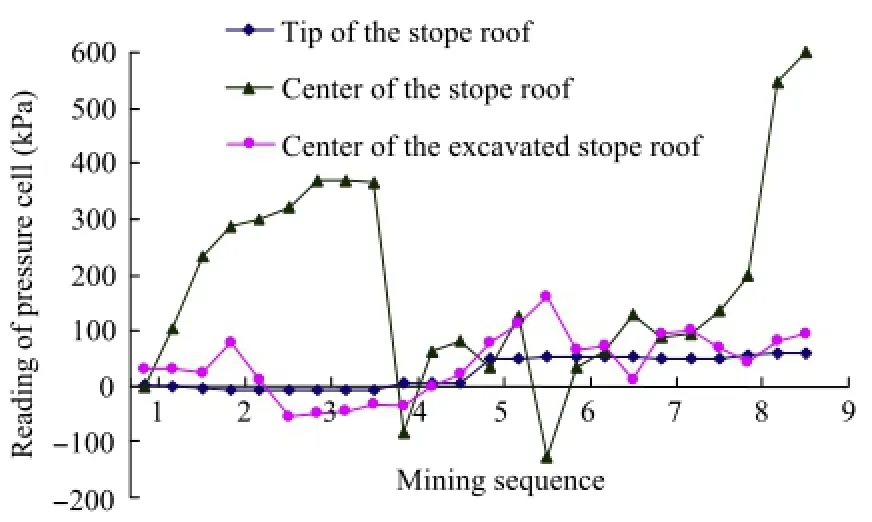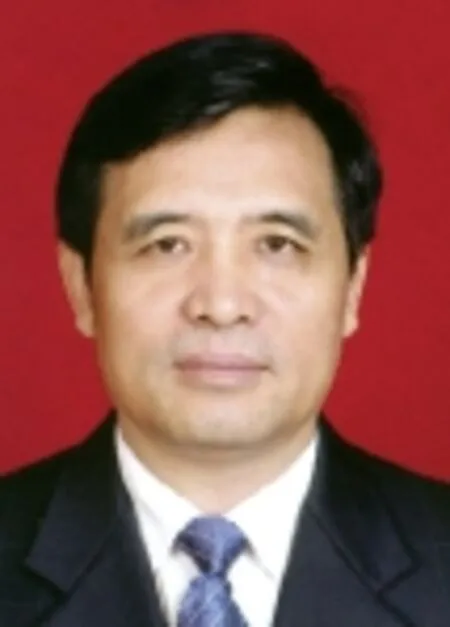Stability analysis of large-scale stope using stage subsequent flling mining method in Sijiaying iron mine
aKey Laboratory of High-effcient Mining and Safety of Metal Mine,Ministry of Education,University of Science and Technology Beijing,Beijing 100083, China
bJinchuan Group Co.,Ltd.,Jinchuan,Gansu 737100,China
cBeijing Institute of Geology,Beijing 100120,China
Full length article
Stability analysis of large-scale stope using stage subsequent flling mining method in Sijiaying iron mine
Zhiqiang Yanga,b,Shuhua Zhaic,Qian Gaoa,*,Maohui Lia
aKey Laboratory of High-effcient Mining and Safety of Metal Mine,Ministry of Education,University of Science and Technology Beijing,Beijing 100083, China
bJinchuan Group Co.,Ltd.,Jinchuan,Gansu 737100,China
cBeijing Institute of Geology,Beijing 100120,China
A R T 1 C L E 1 N F O
Article history:
Received 6 July 2014
Received in revised form
27 October 2014
Accepted 6 November 2014
Available online 31 December 2014
Stage subsequent flling mining(SSFM) method
To improve mining production capacity,a stage subsequent flling mining(SSFM)method is employed for Sijiaying iron mine.The height of the stage stope is approximately 100 m.As there are farmlands and villages on the surface of the mine,the surface deformation should be controlled when the ore is mined out for the purpose of stope stability and minimizing surface subsidence.In this paper,according to the site-specifc geological conditions,the self-stability of the stage-flling body was analyzed,and the failure mechanism of backflling body was defned.Thus the relationship between the exposed height of flling body and the required strength was obtained.Next,the stability of backflling body and the characteristics of surface subsidence due to mining of-450 m level were analyzed using physical modeling. Finally,a three-dimensional numerical model was established using FLAC3D,with which the surface subsidence and the stability of stope were achieved.The results show that the stope basically remains stable during the two-step recovery process.The maximum magnitude of the incline is 10.99 mm/m,a little larger than the permissible value of 10 mm/m,and the horizontal deformation is 5.9 mm/m, approaching the critical value of 6.0 mm/m,suggesting that the mine design is feasible for safety mining.
©2015 Institute of Rock and Soil Mechanics,Chinese Academy of Sciences.Production and hosting by Elsevier B.V.All rights reserved.
1.Introduction
Due to shortage of mineral resources,exploitation of mines under rivers,buildings,and railways(commonly called underthree-objects)is signifcantly important for China’s economy.At present,much effort has been made on the environmental protection in China,thus hazards associated with exploitation of underground mines,including large surface subsidence and groundwater pollution,should be avoided.Therefore,the stage subsequent flling mining(SSFM)method,which can effectively reduce the dilution rate of ore and protect groundwater,is commonly used across the world.In this regard,many scholars made contributions to investigating the optimization of cementtailing ratios and stope structure,as well as the stability of backfll.For example,Liu and Zheng(2007)studied the application of sublevel open stope with delayed backfll mining method at the Tongshan copper mine using feld tests,which offer the basis for the improvement of stope structure and mining technology.Xue (2007)introduced the application of high-level and large-diameter delayed backfll method at the Anqing copper mine.Xiao and Yao(2006)applied the deep-drill and sublevel stope backfll mining method to the Ashele copper mine.Gao(2002)experimentally investigated the application of the sublevel stope delayed backflling method at the Tonglvshan copper mine.Xiao(2005)conducted a physical modeling of high-level large-diameter long-hole mining at the Anqing copper mine to optimize the mining sequence.Huan(1994),Zhou(2000),and Su(2002)adopted the nonlinear programming,the genetic algorithm,and the neural network to optimize the structure of stope,respectively.Liu et al. (2006)studied the reliability of high-level backfll based on chaotic optimization.Zou and Wei(2005)investigated the factors affecting the stability of stope and proposed technical measures for mining activities.Chen et al.(1984)analyzed the stability of stope at depth of 1200 m using nonlinear fnite element analysis.Tesarik et al.(2009)analyzed the long-term stability of a backflled roomand-pillar panel at the Buick mine,Missouri,USA.Besides,Zhou and Gu(2001)optimized the cement-tailing ratios of Anqing copper mine with genetic algorithm.Li and Liu(2004)investigated the mechanical behaviors of highly consolidated tailings backfll and optimized the cement-tailing ratios with the game tree method. Nanthananthan(2006)proposed an optimization design method of cement-tailing ratiosby experimentsin combination withnumerical modeling.Especially,lots of work has been done related to stability of structures such as slopes/stope/backfll in mines through numerical modeling,e.g.FLAC(Vishal et al.,2010;Gupte et al.,2013;Singh et al.,2013;Pradhan et al.,2014).
However,the design of SSFM signifcantly differs in different conditions of overburden strata.In the region of Sijiaying iron mine, a large number of villages and farmlands can be observed on the ground surface.It belongs to“under-three-objects”ore body mining.In order to meet the demand for steel production,the SSFM method is used for this mine according to site-specifc mining conditions.The sizes of the stope are 50 m×25 m×100 m,and two-step mining method for the room and pillar is used.Therefore, the stability of stope and effective control of the surface subsidence are the key issues related to the safe extraction of the mine.In this regard,the stability analysis of super-stope and the surface subsidence of Sijiaying iron mine are necessary to verify the reliability of mining scheme,ensure the safe exploitation of mine,and avoid farmland destruction and villages relocation.
2.Geological and mining conditions
As shown in Fig.1,the Sijiaying iron mine is located at the southern Luanxian County,55 km away from Tangshan,Hebei Province,China.The Sijiaying iron mine is owned and operated by theTangshanIronandSteelGroup.Thestrikeoftheorebodyisinthe direction of NS,the dip direction is in EW,and the average dip angle is 46°.The ore body is composed of biotite granulite and some mica quartzschistabovethe-540mlevel.Thefreshrockisdistributedon thelevelsfrom-540mto-220mwithgoodmechanicalproperties; while the slightly weathered rock is distributed on the levels from-220mto-150mwithslightlydevelopedjointedfractures.In addition,the intensely weatheredrock mass can be observedon the levelsfrom-150mto-90m.AlsotheoverburdenofQuaternarysoil is distributed on the levels from-150 m to-90 m.
Two-step sublevel delayed backfll mining method was used for this mine.The panel was arranged along the strike of the ore body with a length of 120 m.The length and width of the room and pillar are 50 m and 25 m,respectively;and the width of the interval pillar between panels is 20 m.The primary room was frst extracted and backflled by cemented tailings.The cement-tailing ratio was 1:8. Then,the secondary pillar was mined out and backflled with noncemented tailings.To avoid collapse of the farmlands and buildings on the surface due to mining activity,the level of-450 m should be frst mined out.
3.Self-stability of the cemented backflling body
In general,when the exposed area of backflled stope is continuously increased,a typical failure mode of shear sliding can be observed,whereby a plane failure surface occurs that dips outwardsin excavation(openstope),causing partof the exposed flling body to move to the newstope.When the height of backflling body is suffciently large,a flling block with suffcient weight will be formulated to combat any resistance to sliding along a critical failure plane orientated.The resistance to shear sliding results from a combination of cohesion and particle fraction both along the failure surface and at the side walls,and the driving force at failure is the net weight of the block.
It can be seen in Fig.2 that the front side of the backflling body is fully exposed,the back side is non-cemented,and the left and right sides are surrounded by wall rocks.Assuming thatLcis the strike length of the backflled stope,Bcis the width,andHcis the total height of the exposed backflling body,the horizontal stressF1induced by the non-cemented tailings can be obtained:

Fig.1.Location of Sijiaying iron mine.

Fig.2.Mechanical model of cemented backfll.


whereλcis the coeffcient of horizontal pressure;γ2is the unit weight of the non-cemented backfll;h1is the upper height of sliding block,which can be calculated by Eq.(2);andαis the angle of the critical failure plane.
The weight of the backflling block is

whereγcis the unit weight of the cemented backflling body(when more than one cement-tailing ratios are concerned,γcis the weighted mean value),h2is the average height of the sliding block, which can be calculated by the following equation:

The overlying loadF0is

The total driving force on the failure plane is

Assuming that the vertical average stress on the failure plane is σ,the resisting forceT1obtained from the surrounding wall rock is

wherec′,φ′are the cohesion and internal friction angle of the hanging wall and/or footwall,respectively.If the backflling material has merely one ratio,thenwe can considerc′=ccandφ′=φc; if more ratios are concerned,they can be considered to be the weighted values.
The resistant force induced by the cemented backfll,T,is

wherec′andφ′are the cohesion and internal friction angle of cemented backflling body,respectively.If the backflling body has merely one ratio,then we havec′=ccandφ′′=φc;if more ratios are concerned,the weighted mean values are chosen.
If the backflling body does notfail,the following conditionmust be satisfed:

By solving Eq.(9),the following expression can be derived:

After substituting the related mechanical parameters listed in Table 1 in Eq.(10),the relation curve between the required strength of backflling body and the exposed height is obtained and shown in Fig.3,where the length of the ore room is 50 m,and the width is 25 m.It can be seen from Fig.3 that the required strength of backflling body increases with the increase of the exposed height. In the earlier stage of the curve,the increasing trend is evident,and the required strength of backflling body does not increase linearly with the increase of height because the arch function of surrounding rock is increased,thus reducing the vertical stress at the bottom of backfll.When the exposed height reaches 100 m,the required strength is 0.9 MPa.Therefore,the mixture ratio of the cemented backflling body can meet the strength requirement of the stope.
4.Stability analysis based on physical modeling
Based on the site-specifc geological and mining conditions,the model size used in this physical modeling is 2.5 m×0.3 m×2.8 m. In this model,the geometric similarity ratio is 1:170,the bulk density similarity ratio is 0.6:1,and the stress similarity ratio is1:285.Sand is used as the main aggregate,and gypsum and calcium carbonate are considered as the cemented materials.The weighttype model test was used,where the hierarchical compaction method was adopted to construct the model.The thickness of each level is 2-3 cm.First the layers were compacted upward layer by layer.Then suitable amount of mica was sprinkled on the top of the compacted layer,and mortar was fed to the next layer.The compaction step was repeated until the completion of the whole model(see Fig.4).Besides,the surface displacement of the model was monitored using the distributed optic fber sensors and displacement meters.The displacements of the internal rock and pillar were monitored by optic fber sensors,and the change of stress was recorded by pressure sensors.There were 17 displacement meters and 15 pressure boxes installed in the model in total, and their locations are shown in Fig.5.

Table 1Physico-mechanical parameters used in numerical model.

Fig.3.Required strength with different exposed heights.
4.1.Simulation processes
The following cutting and flling processes were simulated in the test:
(1)Extract ore to form the primary room and measure the stress and displacement.
(2)Backfll the primary room with cemented tailings and record the stress and displacement.
(3)Mine out the pillar and record the magnitude of stress and displacement.

Fig.4.The test model.

Fig.5.Layout of monitoring equipments.
(4)Backfll the secondary void where the pillar is excavated with non-cemented tailings, then monitor the stress and displacement.
The mining processes mentioned above are shown in Figs.6-9. It can be observed from these fgures that after the extraction of the primary room,the model was in a good condition and no cracks or failures were developed.But when the secondary pillar was mined, it can be noted that some local failures were developed on the top of the exposed sides.Through backflling by non-cemented materials,the loose tailings were caved immediatelyafter the removal of baffe.
4.2.Results of physical modeling

Fig.6.Extraction of ore to form primary room.

Fig.7.Backflling the primary room with cemented material.
(1)When the primary room is formed,the displacements of the roof and ground surface are smaller due to the timely backflling and the supporting effect of the pillar.The maximum displacement of the roof is 0.21 mm for the model and about 35.7 mm for the prototype(Fig.10);the maximum surface settlements for the model and the prototype are approximately 0.012 mm and 2.3 mm,respectively(Fig.11);and the maximum deformation of the interval pillar on the top(Fig.12)are 0.09 mm and about 15.4 mm for the model and the prototype, respectively.As for the change of stress,the stress in the roof of the primary room increases rapidly(Fig.13),suggesting that the stress is transferred to the roof after the excavation of the orebody room.

Fig.8.Extracting ore to form secondary room.

Fig.9.Backflling the secondary room with non-cemented materials.
(2)After the secondary pillar was mined,the cemented backfll was roughly stable.Due to the vibration induced by mining,a small amount of backflling on the top fell down,but there was not a large area running off.After the secondary room was backflled using the non-cemented tailings,the tailings backflling failed when the baffe was removed.The main reason is that the tailings contain no cementation.In this regard,the roof displacement and the surface subsidence as well as the horizontal deformation of the interval pillar increase to some degree.The ultimate deformation of the roof was 0.42 mm,about 71.4 mm in the prototype;the maximum surface settlement was 0.03 mm,corresponding to a value of about 5.1 mm in the prototype;the lateral deformation of interval pillar reached 0.09 mm,which was about 15.4 mm for the prototype. Considering the changes in the stress feld,the stresses in the roof and the interval pillar(the position of the second monitoring point is the origin of coordinate,so the height is negative at the bottom of pillar)increase(Fig.14),but are less than the ultimate compressive strength.
(3)The designed cement-tailing ratio is feasible.When mining the secondary pillar,the cemented backflling with the height of 100 m shows a good self-stability.
(4)Because the distributed fber optic sensors are not subjected to electromagnetic interference and are almost insensitive to corrosion,more accurate and satisfactory monitoring data were obtained in comparison of those recorded by the displacement meters.
5.Three-dimensional numerical modeling and analysis

Fig.10.Change of roof displacement with mining sequence.

Fig.11.Change of surface subsidence with mining sequence.

Fig.12.Change of lateral deformation of interval pillar with mining sequence.
Inordertoinvestigatetheinfuenceofdifferentminingstageson the surface subsidence,a three-dimensional numerical model was established by means of FLAC3Daccording tothe mining design.The sizeofthemodelis800m(x-axis:EW)×600m(y-axis:NS)×540m (z-axis:vertical direction)in terms of length×width×height.The calculationmodelisshowninFigs.15and16,with94,928zonesand 113,254 grids.The surrounding rocks and backflls are assumed to conform to the Mohr-Coulomb yield criterion,and the employed physico-mechanical parameters are listed in Table 1.
The variations of surface subsidence with mining steps are shown in Fig.17.It can be seen from Fig.17 that the maximum subsidence point moves to the right as the mining activity continues.The magnitudes of surface subsidence during mining in the frst and second stages are 1.8 mm and 6.1 mm,respectively. However,in the third stage,the surface subsidence changes abruptly to a value of 1 m,especially when the secondary room is mined.After backflled with non-cemented tailings,the surface subsidence reaches 1.2 m.

Fig.13.Change of roof stress with mining sequence.

Fig.14.Change of horizontal stress of interval pillar with mining sequence.

Fig.15.Three-dimensional numerical model.
At the same time,according to the incline,curvature as well as horizontal deformation shown in Fig.18,it can be noted that the curvature value is smaller than its allowable value,and the incline and horizontal deformation approach to their critical values. Therefore,it is concluded that the structure parameters of the stope in association with the mechanical parameters of the backfll can ensure the deformation of ground surface to a controllable range. Besides,the movement of ground surface due to mining activity will not cause damage to the villagers above the mine surface.

Fig.16.Distribution of wall rock and ore body.

Fig.17.Surface subsidence change with mining steps.

Fig.18.Surface incline,curvature and horizontal deformation caused by mining.
6.Conclusions
Through theoretical analysis,physical modeling and numerical simulations,the stope stability and the surface subsidence of the Sijiaying iron mine were analyzed in detail,and the main conclusions are drawn as follows:
(1)According to the results of self-stability test on cemented backfll,the backflling block can basically remain stable even when the exposed height reaches 100 m where the cement to sand ratio of 1:8 is adopted.
(2)According to the results of physical modeling,it is noted that duringtheminingofprimaryroomatthe-450mlevel,thestope is stable.However,after the secondary pillar was mined out, pieces of backflling body fell down.The displacements of the stope and ground surface were small,although lateral fexural deformation occurred in the interval pillar,and the maximum deformationof15.4mmcanberecordedatthetopoftheinterval pillar.The maximumvertical stress of the roof is 15 MPa and the horizontal stress is 3.5 MPa,which do not exceed the ultimate compressive strength of the pillar.Therefore,the stope is stable and the ground surface can be safely controlled.
(3)According to the results of the three-dimensional numerical modeling,the curvature value is smaller than its critical value. The maximum magnitude of the incline is 10.99 mm/m,a little lager than the permissible value of 10 mm/m;and the horizontal deformation is 5.9 mm/m,approaching to the critical value of 6.0 mm/m.The calculation shows that the stope can be controlled with the surface subsidence within its allowable threshold,and the surface subsidence caused by mining activity will not exert major infuence on the safety of the villagers and local residence.
(4)Among the four steps of mining and backflling process,the
stability of stope during the third step is the worst,so it is necessary to pay more attention to the monitoring of stope stability to assure the stability of stope and safety of production.
(5)During the third-step mining of pillar,the self-stability of the second-step cemented backflls,as the exposed area increases, will reduce.Asfor thestopewith height of100 m,only whenthe designstrengthofcementedbackfllsisgreaterthan1.0MPa,the stability of backfll could be maintained.
In general,theoretical analysis,physical model as well as numerical modeling are utilized in this paper to study the stability of stope and backflls.Advantages and disadvantages of each method are summarized.Theoretical analysis is based on the empirical and semi-empirical method to analyze and evaluate the stability of cementing backflls.The physical modeling is only used for the stress-strain simulation during the course of mining and backflling at the level of-450 m,but the stress of multi-staged stope is not available.The numerical simulation can analyze the stability of stope and stress distribution due to mining,but the simulation results rely on the reliability and accuracy of rock mass parameters. Therefore,combination of the three methods used to perform comprehensive analysis can not only increase the reliability of stability analysis,but also offer important basis for design optimization.
Confict of interest
The authors wish to confrm that there are no known conficts of interest associated with this publication and there has been no signifcant fnancial support for this work that could have infuenced its outcome.
Acknowledgments
The authors acknowledge the support by the National Basic Research Program of China (973 Program) (Grant No. 2010CB731500)
Chen DW,Chen JY,Zavodni ZM.Stability analysis of sublevel open stopes at great depth.International Journal of Rock Mechanics and Mining Sciences and Geomechanics Abstracts 1984;21(2):61.
Gao WD.Experimental study on the application of subsection remain mining and delayed backflling method at Tonglvshan copper mine.MS Thesis.Changsha, China:Central South University;2002(in Chinese).
Gupte SS,Singh R,Vishal V,Singh TN.Detail investigation of stability of in-pit dump slope and its capacity optimization.International Journal of Earth Sciences and Engineering 2013;6(2):146-59.
Huan BL.The optimum design of two-step mining stope.Journal of Kunming Institute of Technology 1994;19(5):40-5(in Chinese).
Li XB,Liu ZX.On mechanics of highly consolidated tailings backfll and cementtailing ratios optimization with game tree.Journal of Safety and Environment 2004;4(4):87-90(in Chinese).
Liu RQ,Zheng RX.The application of sublevel open stope delayed backfll mining to the Tongshan copper mine.Mining Technology 2007;7(3):6-7(in Chinese).
Liu ZX,Li XB,Zhang YP.Reliability of analysis of high level backfll based on chaotic optimization.Chinese Journal of Geotechnical Engineering 2006;28(3):348-52 (in Chinese).
Nanthananthan N.Backfll optimization using mine tailings for improved ground stability in underground mines.MS Thesis.Halifax,Canada:Dalhousie University;2006.
Pradhan SP,Vishal V,Singh TN,Singh VK.Optimisation of dump slope geometry Vis-à-vis fyash utilisation using numerical simulation.American Journal of Mining and Metallurgy 2014;2(1):1-7.
Singh TN,Pradhan SP,Vishal V.Stability of slopes in a fre-prone mine in Jharia Coalfeld,India.Arabian Journal of Geosciences 2013;6(2):419-27.
Su JH.Application of artifcial neural network in optimization of mining structure parameters.Mining Research and Development2002;22(4):27-9 (in Chinese).
Tesarik DR,Seymour JB,Yanske TR.Long-term stability of a backflled room-andpillar test section at the Buick Mine,Missouri,USA.International Journal of Rock Mechanics and Mining Sciences 2009;46(7):1182-96.
Vishal V,Pradhan SP,Singh TN.Instability assessment of mine slope-a fnite element approach.International Journal of Earth Sciences and Engineering 2010;3:11-23.
Xiao BF,Yao X.Test of deep-drill and sublevel stope backfll mining method and its application on the Ashele copper mine.Mining Technology 2006;6(3):195-8 (in Chinese).
Xiao ME.Similar experiment of high-level large-diameter long-hole mining in the Anqing copper mine.Mining Research and Development 2005;25(3):11-2(in Chinese).
Xue YZ.The application of high-level and large-diameters delayed backfll method on the Anqing copper mine.Mining Technology 2007;7(4):13-4(in Chinese).
Zhou KP,Gu DS.Genetic optimization design of the cement-sand ratio of tailings consolidated flling in Anqing copper mine.Metal Mine 2001;7:11-3(in Chinese).
Zhou KP.Genetic optimization of stope structure parameters.Mining Research and Development 2000;20(3):7-10(in Chinese).
Zou XJ,Wei M.Analysis of factors affecting the stability of high level and deep drilling stope and related mining technique.Mining Technology 2005;5(3):1-2 (in Chinese).

Dr.Zhiqiang Yang,born in October 1957 in Shanxi Province,China,is now a Senior Engineer and Adjunct Professor of University of Science and Technology Beijing, Visiting Fellow of the Key Laboratory of Ministry of Education of High-effcient Mining of Metal Mine Safety and Doctoral Student Supervisor.He graduated from the Northeastern University majored in mine construction, and earned his bachelor’s degree in February 1982.Then he received M.S.in environmental engineering in 2003 and Ph.D.in the engineering mechanics in 2008 from University of Science and Technology Beijing.His research interests cover mine design,pressure control,safety management,and mine solid-waste re-utilization in the mining technology.He received 5 awards,including National Science and Technology Progress Award.Dr.Yang has published 38 journal papers and 5 academic monographs.
*Corresponding author.Tel.:+86 13552305007.
E-mail address:gaoqian@ces.ustb.edu.cn(Q.Gao).
Peer review under responsibility of Institute of Rock and Soil Mechanics,Chinese Academy of Sciences.
1674-7755©2015 Institute of Rock and Soil Mechanics,Chinese Academy of Sciences.Production and hosting by Elsevier B.V.All rights reserved.
http://dx.doi.org/10.1016/j.jrmge.2014.11.003
Self-stability analysis of flling body
Physical modeling
Three-dimensional numerical model
 Journal of Rock Mechanics and Geotechnical Engineering2015年1期
Journal of Rock Mechanics and Geotechnical Engineering2015年1期
- Journal of Rock Mechanics and Geotechnical Engineering的其它文章
- Dynamic rock tests using split Hopkinson(Kolsky) bar system-A review
- Some modifcations to the process of discontinuous deformation analysis
